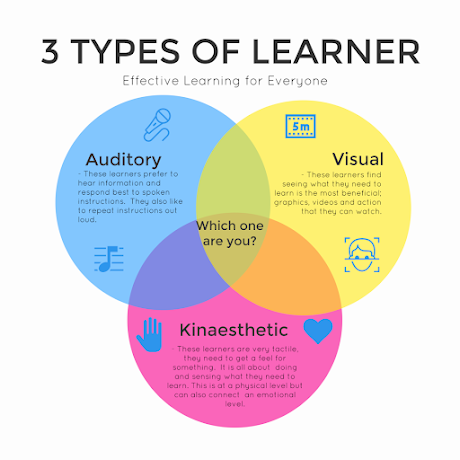Learning Styles Analysis
LEARNING STYLE ANALYSIS
Interconnection of Learning Styles and Development
Learning styles are interconnected with the student's cognitive, linguistic, social, emotional, and physical development through their engagement and level of motivation. When students are engaged with the lessons and activities, there is a greater chance of enhanced learning and retention of the information presented. When teachers develop lessons that utilize all learning styles, students benefit from building different skills.
Effect on Planning & Instructional Strategies
Learning style inventories can influence instruction. Providing an inventory allows the teacher to see a students preferred environment to study in, how they understand information, and the kinds of activities they appreciate (Main, 2022). Once teachers know their students' learning styles, they can better choose instructional strategies that fir their needs and learning choices, which can lead to successful learning and greater chances of holding onto information (Main, 2022).
After examining the results of the learning styles inventory, using the data results would be the next step in planning instruction to fit each students' needs. Based on each student's preferred learning style, my instructional strategies would need to be beneficial for students to engage with the lesson and enhance their understanding of the content.
Students are beginning their new reading, in which they will analyze two chapters from Harriet Tubman's biography to understand her character traits and the methods used to reveal them.
Visual learner retain information effectively when it presented through pictures or other visuals such as diagrams, charts, or videos (Main, 2022). One instructional strategy I would utilize for visual learners is a graphic organizer. With students analyzing Harriet Tubman's traits, it would be helpful for them to organize the information they identified so that they could use it to help them write an essay or paper.
Kinesthetic learners learn by doing and touching (Main, 2022). One instructional strategy for kinesthetic learners is having them create a presentation to show their understanding of the information they learned. Using a website like Canva, students can choose how they would like their learning to be presented (ex: slides, Instagram template, Tik Tok video).
Student Strengths, Interests, and Needs for Growth Effect on Instruction
Considering a students strengths, interests, and needs for growth are crucial when it comes to instruction. For teachers to be successful in their instruction, they need to ensure they are differentiating their lessons to allow all learners to be successful in the classroom (McCarthy, 2018).
One way I evaluate students' strengths, interests, and needs is at the beginning of the school year. I discuss the various learning styles and what they mean to students. Students then complete an activity where they figure out learning styles. This helps ensure I am familiar with what works best for students. Though I sometimes ask students which learning style would help them for a particular lesson, I provide multiple modalities that they could choose from to fit their current needs.
Assessments
When developing assessments, they shouldn't just be created for students to recall information but rather from students' collections of understanding, which should be communicated in different wats relevant to each student (Edwards, 2021).
Auditory students learn best when information is strengthened by sound. They may prefer to use their voices to retain new topics and ideas (Malvik, 2020). Students N.Z. and N.W. would benefit from assessments where they could explain verbally what they learned. These students could record a Flipgrid video or use a recoding device to upload their responses to show their understanding.
Kinesthetic students learn best through doing things. They may prefer role-playing or using their hands to understand new concepts (Malvik, 2020). Students R.S. and J.R. would benefit from assessments in which they could create a product that allows them to use their hands. These students could create a poster to show their understanding of the material or a digital presentation.
References
Edwards, S. (2021, July 22). Designing assessments according to learning styles. Teach Better.
https://teachbetter.com/blog/designing-assessments-according-to-learning-styles/
Mai, P. (2022, November 15). Learning styles. Structural Learning.
https://www.structural-learning.com/post/learning-styles
Malvik, C. (2020, August 17). 4 types of learning styles: how to accommodate a diverse group of students. Ramussen University.
https://www.rasmussen.edu/degrees/education/blog/types-of-learning-styles/
McCarthy, J. (2018, April 11). Student-centered planning. Edutopia.
https://www.edutopia.org/article/student-centered-planning








Comments
Post a Comment